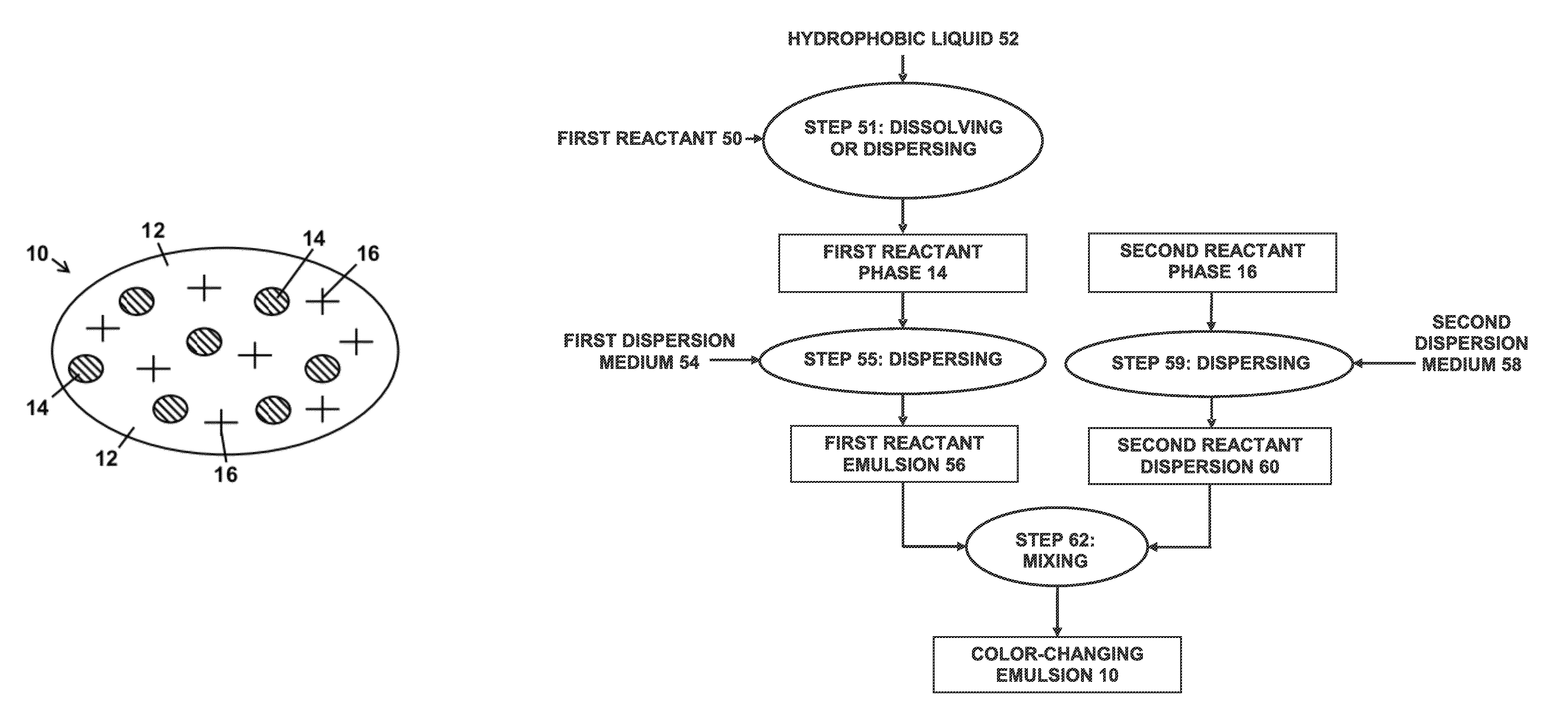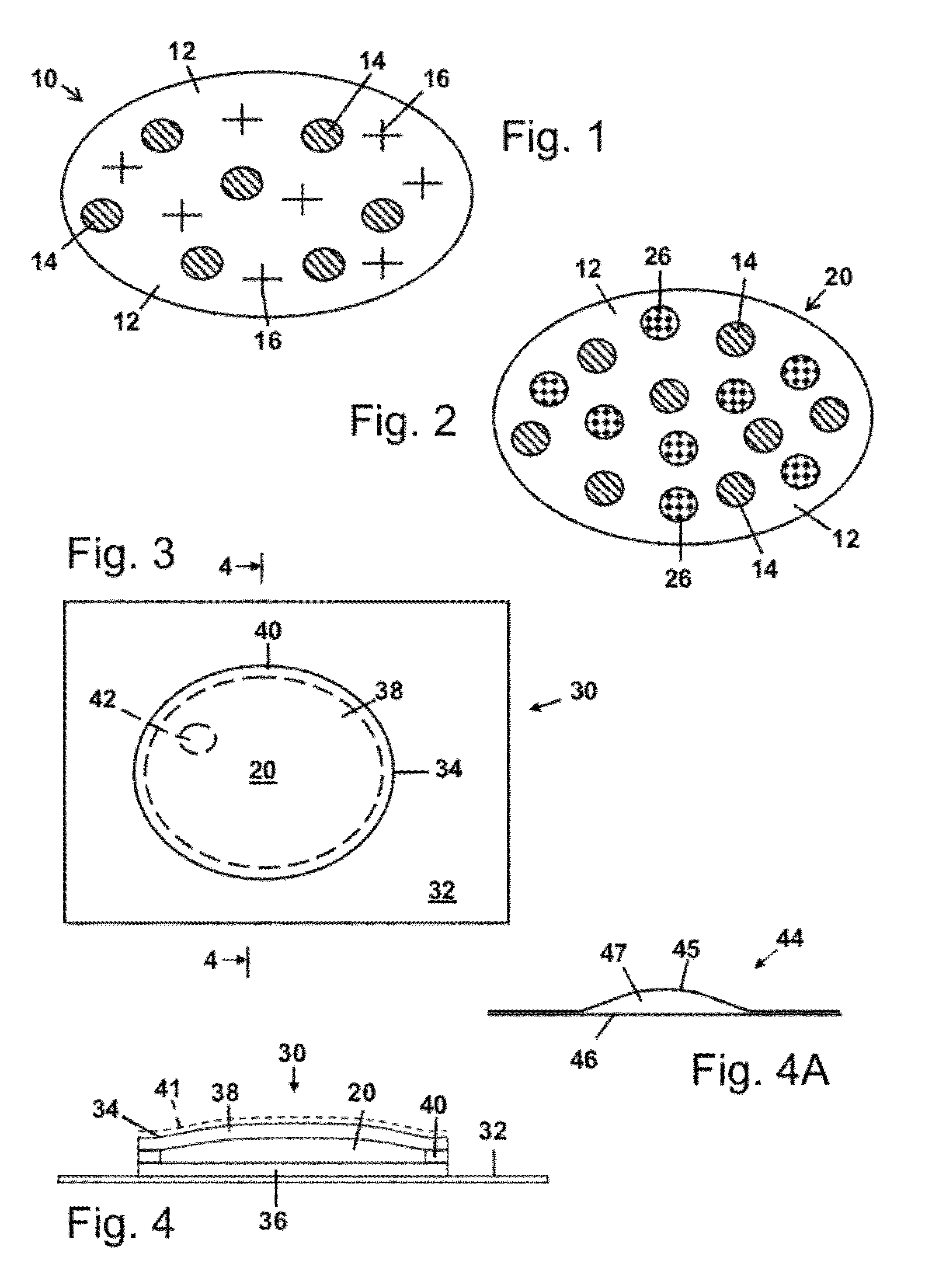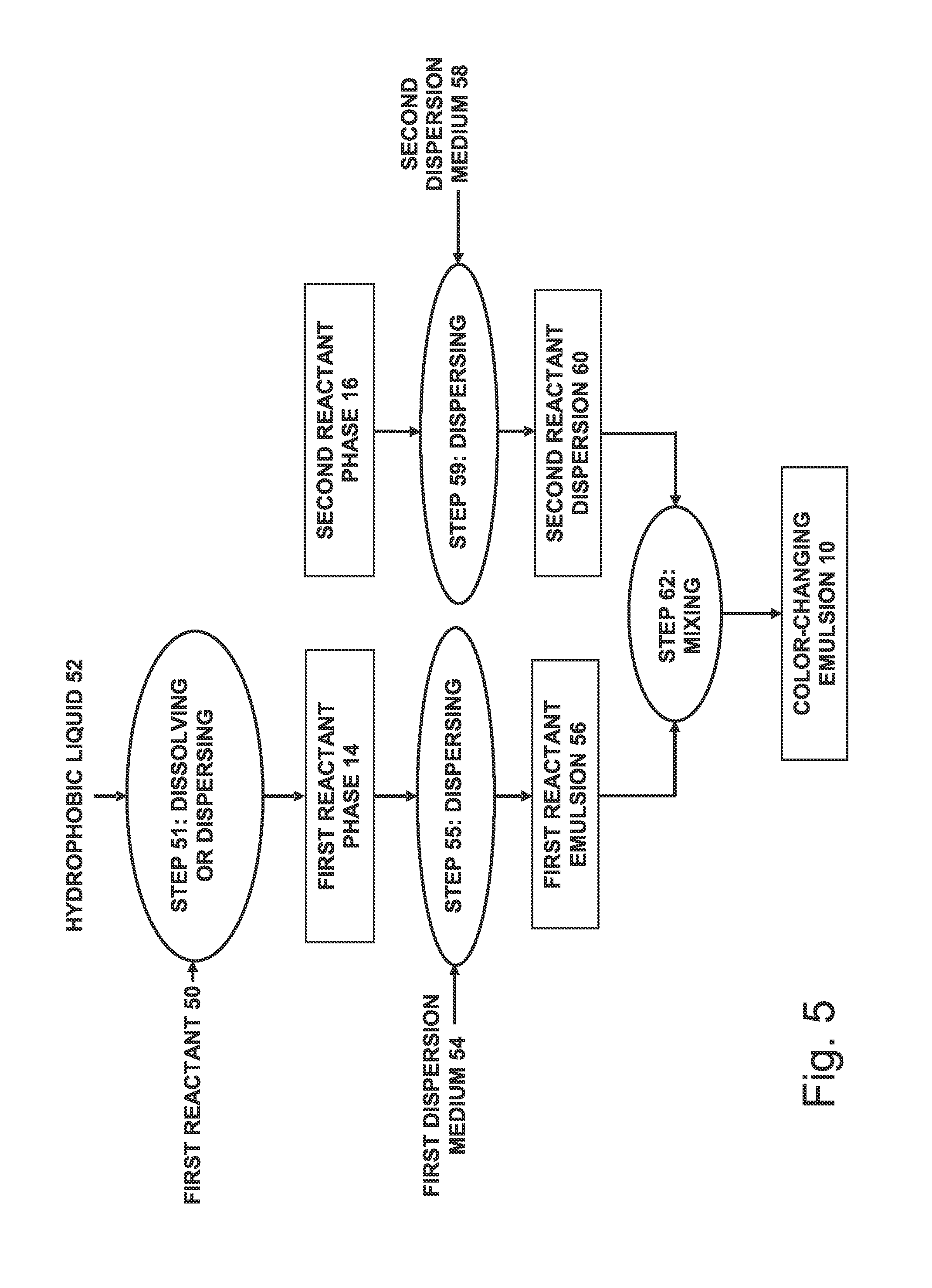Color-changing emulsions for freeze indicators
a technology of indicators and color changing emulsions, applied in the field of color changing emulsions for freeze indicators, can solve the problems of cold-sensitive products, can lose quality, deteriorate or deteriorate, and can lose potency, so as to prevent the loss of water vapor, raise the effective freezing and raise the melting point of the dispersion medium
- Summary
- Abstract
- Description
- Claims
- Application Information
AI Technical Summary
Benefits of technology
Problems solved by technology
Method used
Image
Examples
example 1
Preparation of a Color-Changing Emulsion for a Freeze Indicator
[0382]In the following example, all parts are parts by weight. To prepare a color precursor emulsion, a mixture of 1 part crystal violet lactone color precursor, 5 parts nonionic surfactant (TERGITOL® 15-5-15, Dow Chemical, Midland, Mich.) and 44 parts terphenyl oil (MCS 2811 Solutia, St. Louis, Miss.) is prepared and heated to about 80° C. to dissolve the crystal violet lactone in the oil. The resultant oil solution, containing surfactant and color precursor, is transparent, has a pale yellow color, and exemplifies one possible embodiment of color precursor solution 84. The color-precursor-in-oil solution temperature is maintained at about 80° C.
[0383]A vial containing 50 parts of distilled water is heated to 60° C. or a little above. A homogenizer is inserted into the hot color-precursor-in-oil solution beginning low speed agitation until the temperature is at about 80° C., at which point the agitation rate is increase...
experiment 1
Freeze Indicator Performance (Emulsion of Example 1)
[0387]The response to freezing of the color-changing emulsion prepared in Example 1 is evaluated by freezing the emulsion and observing the color change, if any. One sample of the emulsion is placed in a freezer estimated to have a temperature of −10° C. or lower, for a period in excess of one hour, and then removed. Another sample is maintained unfrozen at approximately room temperature. When removed, the freezer sample appears to be frozen and has a medium blue appearance, as viewed in a transparent tube having a diameter of about 10 mm. The medium blue frozen appearance is distinctly different from the bluish white or off-white appearance of the unfrozen emulsion sample. Upon thawing of the frozen sample, the emulsion separates and two phases become visible, a medium blue oily phase, floating on top of a lighter blue, translucent, water phase. The thawed mixture also has a medium blue appearance, which is distinctly different fr...
example 2
Emulsion Prepared with Pretreatment of Color Developer
[0389]Example 2 repeats Example 1 with the difference that, before use, the alkylphenolic resin is pretreated with water to remove water-soluble impurities and reduce undesired background color. Thus, the alkylphenolic resin is mixed with distilled water in a proportion of about 1:70 by weight, and with a non-ionic surfactant in a proportion of about 30:1 by weight resin to surfactant. The mixture is brought to a boil, melting the resin. The aqueous phase is poured off and the water treatment of the resin is repeated three times. The final mixture is cooled to crystallize the resin. The resin is separated from the water, dried, ground to a powder and then used in the preparation of a color-changing emulsion, as described in Example 1.
PUM
 Login to View More
Login to View More Abstract
Description
Claims
Application Information
 Login to View More
Login to View More - R&D
- Intellectual Property
- Life Sciences
- Materials
- Tech Scout
- Unparalleled Data Quality
- Higher Quality Content
- 60% Fewer Hallucinations
Browse by: Latest US Patents, China's latest patents, Technical Efficacy Thesaurus, Application Domain, Technology Topic, Popular Technical Reports.
© 2025 PatSnap. All rights reserved.Legal|Privacy policy|Modern Slavery Act Transparency Statement|Sitemap|About US| Contact US: help@patsnap.com



